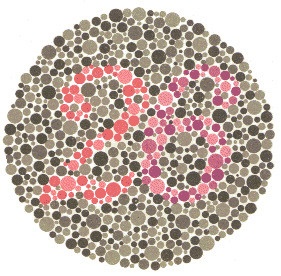Here are some facts about colorblindness
What is colorblindness
Its a major form of Color Vision Deficiency which makes certain colorshades indistinguishable. It affects approximately 1 in 12 men (8%) and 1 in 200 women in the world, and at Greece it is estimated that there are 450.000 people in that condition. The most common is the red/green colorblindness, in which the eye recieves red signals weaker than green, thus confusing green and red, as well as blue and purple etc.

You cannot treat colorblindness
Colourblindness is an inherited condition which means it is usually passed down from your parents. Most of the times a grandfather may have colorblindness which is then inherited to his daughter (she is a carrier) and then her son is colorblind. Thus, there is not a cure to colorblindness yet, although we can help them adapt to a colorblind-friendly environment in which color coded information is discrete and distinct.

Normal Vision

Protanopia (Reds)

Deyteranopia (Greens)

Tritanopia Vision (Blues)
Your son has a 1 in 12 chance to be colorblind
And you would not even know it because it requires to tell the opthalmiatrist to do a special examination on colorblindness. Not many parents and schools are aware of which children have colorblindness or not! And that is terrible because this is the age where children are 78% in touch with new colors and drawings. Do you want colorblind children to struggle everyday because the school or nursery does’t have a proper colorblind friendly strategy?
Your teacher should know who is colorblind and how to treat them
Education is based on 2 major things: Word and Colors. But if dyslexia is a form of learning disability why colorblindness is not? The educational institutions are unaware of the importance of the issue, and if they weren’t they could not find a sustainable strategy to develop colorblind-friendly options. As ChromaSwap we believe that education must be accessible to everyone despite their disabilities, and we should consider colorblindness as a form of disablility.